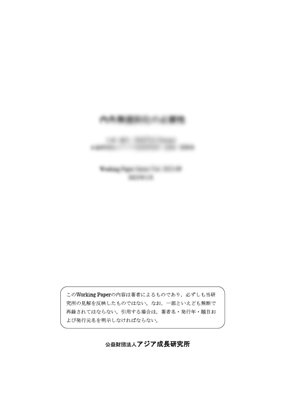The Korean Steel Industry after the Currency Crisis

| 執筆者 | Tae Yol Lee |
|---|---|
| 発行年月 | 2003年 11月 |
| No. | 2003-36 |
| ダウンロード | 432KB |
内容紹介
This paper first analyzes the major trends in Korea’s steel industry in the 1990s, highlighting the prominent role of overcapacity. Overcapacity resulted both from chronic overinvestment in past years and the collapse of domestic demand following the economic crisis, which led to a large depreciation of the won in December 1997 followed by a large economic contraction in 1998. After the crisis a number of Korean firms, including a few medium-sized steel firms, became insolvent and had to cease operations, while other firms suspended or cancelled planned investments. Steel firms also began to downsize, reducing employment substantially in 1997-1998, and it seems clear that the days of rapid growth in this industry are over in Korea. The crisis also led to large policy changes, including the accelerated privatization of the largest steel firm, POSCO, which was previously state-owned. The paper then analyzes the role of international trade in Korean steel, highlighting its relatively small size in most years and the important role the large increase of exports played in 1998 as a buffer for Korean steel makers in the midst of the crisis. Finally, the paper uses a simple model of interactions between domestic steel demand and macroeconomic variables to illustrate how exchange rate adjustments played a particularly important role in the recovery of Korea’s steel industry after the crisis.
